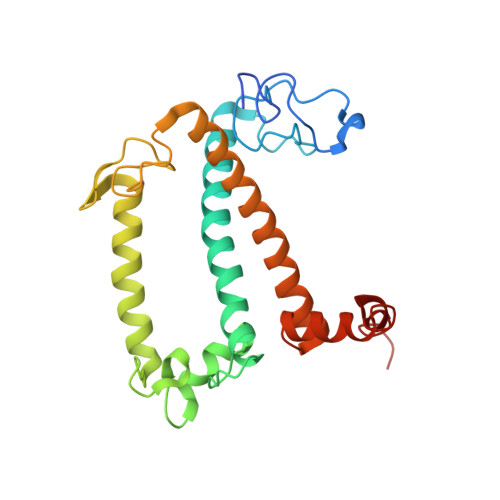Mechanisms of Photoprotection and Nonphotochemical Quenching in Pea Light-Harvesting Complex at 2.5 A Resolution.
Standfuss, J., Terwisscha Van Scheltinga, A.C., Lamborghini, M., Kuehlbrandt, W.(2005) EMBO J 24: 919
- PubMed: 15719016
- DOI: https://doi.org/10.1038/sj.emboj.7600585
- Primary Citation of Related Structures:
2BHW - PubMed Abstract:
The plant light-harvesting complex of photosystem II (LHC-II) collects and transmits solar energy for photosynthesis in chloroplast membranes and has essential roles in regulation of photosynthesis and in photoprotection. The 2.5 A structure of pea LHC-II determined by X-ray crystallography of stacked two-dimensional crystals shows how membranes interact to form chloroplast grana, and reveals the mutual arrangement of 42 chlorophylls a and b, 12 carotenoids and six lipids in the LHC-II trimer. Spectral assignment of individual chlorophylls indicates the flow of energy in the complex and the mechanism of photoprotection in two close chlorophyll a-lutein pairs. We propose a simple mechanism for the xanthophyll-related, slow component of nonphotochemical quenching in LHC-II, by which excess energy is transferred to a zeaxanthin replacing violaxanthin in its binding site, and dissipated as heat. Our structure shows the complex in a quenched state, which may be relevant for the rapid, pH-induced component of nonphotochemical quenching.
Organizational Affiliation:
Max Planck Institute of Biophysics, Department of Structural Biology, Frankfurt am Main, Germany.





















